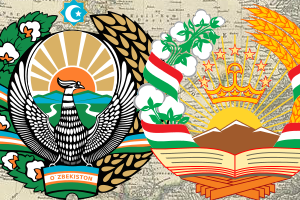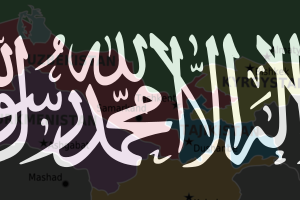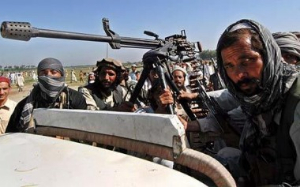The IMU is extinct: what next for Central Asia's jihadis?
By Jacob Zenn
May 3rd, 2016, The CACI Analyst
For more than a decade after the September 11, 2001 attacks in the U.S., the Islamic Movement of Uzbekistan (IMU) was the “bogeyman” of Central Asian militancy. It was the most well-known militant group in Central Asia and abroad, even though it was in exile in Afghanistan and Pakistan under the protection of the Taliban and al-Qaeda. Years of drone strikes and counter-insurgency operations failed to eliminate the IMU. Ironically, however, it was neither the U.S. nor coalition forces that destroyed the IMU. Rather, it was the Taliban who liquidated the IMU in late 2015 as punishment for its “betrayal” of the Taliban (and al-Qaeda) by pledging loyalty to Abu Bakr Al-Baghdadi, leader of the terrorist organization calling itself the Islamic State (ISIS). This will change the nature of the militant threat to Central Asia and force a reconsideration of Uzbekistan’s counter-extremism measures.
Uzbekistan concerned over SCO expansion
By Farkhod Tolipov (05/08/2015 issue of the CACI Analyst)
The Shanghai Cooperation Organization (SCO) held its annual summit on June 9-10, 2015, in the Russian town of Ufa, which was an historical turning point in the organization’s evolution. It adopted a Development Strategy towards 2025 and admitted India and Pakistan as full members. Uzbekistan has taken over the Chairmanship of the SCO from Russia for the next one year period. During the summit, Uzbekistan’s President Islam Karimov expressed concerns revealing Tashkent’s reluctant acknowledgement of the fact that from now on the SCO will be more than just a Central Asia-focused structure.

The Uzbek-Tajik détente: can it last?
By George Voloshin (08/07/2015 issue of the CACI Analyst)
On June 22-24, Uzbekistan’s capital, Tashkent, hosted a third meeting of the Uzbek-Tajik intergovernmental commission on economic cooperation. Unlike the two previous sessions, which were organized in Dushanbe in August 2002 and February 2009, this year’s bilateral trade talks took place against the backdrop of an emerging détente between the two Central Asian neighbors. Uzbekistan and Tajikistan are currently confronted with a host of shared challenges ranging from the threat of radical Islam to socioeconomic instability, while their bilateral relationship is still constrained by unsettled disputes from the past.

Islamic State in Central Asia: threat or opportunity
By Charlie Smith (08/07/2015 issue of the CACI Analyst)
Central Asia is a key region that many believe has fallen into the crosshairs of the terrorist group calling itself the Islamic State (ISIS). Local governments are gravely concerned about returning fighters and possible ISIS infiltration in the region, and foreign powers, especially neighboring Russia and China, have expressed their deep concerns. This grim picture, however, obscures a more complex, and perhaps more accurate, story. Might the specter of ISIS have less to do with its on-the-ground ability to destabilize the region and more to do with the geopolitical concerns of those who are stating these threats?

Central Asian Militants Target Xinjiang, South Asia and Syria Before the Homefront
By Jacob Zenn (09/03/2014 issue of the CACI Analyst)
Despite concerns about the threat of Central Asian militant groups to their home countries after the U.S. withdrawal of troops from Afghanistan, these militant groups are currently focused on “winning” primarily in Afghanistan, secondarily on China’s Xinjiang Province and South Asia, and only then on their home fronts. Central Asians in Syria and Iraq, however, are receiving inspiration from the Islamic State’s self-declared Caliphate and military successes and are vowing that they will create a similar Caliphate in Central Asia. In the near-term, China, Pakistan and possibly India are within range of Central Asian militant groups, but the security crises in Central Asia that are most likely to emerge come from the region’s own internal weaknesses and vulnerabilities.








